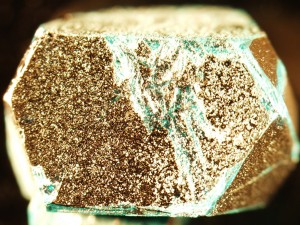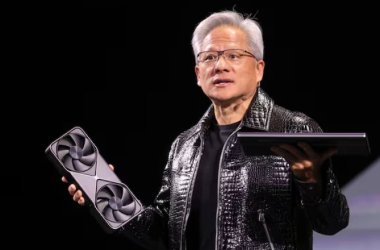Researchers at MIT and other institutions have demonstrated a new type of magnetism, only the third kind ever found, and it may find its way into future communications, computing and data storage technologies.
Working with a tiny crystal of a rare mineral that took 10 months to make, the researchers for the first time have demonstrated a magnetic state called a QSL (quantum spin liquid), according to Massachusetts Institute of Technology physics professor Young Lee. He is the lead author of a paper on their findings, which is set to be published in the journal Nature this week. Theorists had said QSLs might exist, but one had never been demonstrated before.
“We think it’s pretty important,” Lee said, adding that he would let his peers be the ultimate judges.
Lee and his fellow researchers didn’t carry out their work with IT advancements in mind, but while studying how a QSL works, they saw a phenomenon called “long-range entanglement” that may brighten the prospects for new types of storage, computing or networking.
The two other known forms of magnetism are already widely used. Ferromagnetism, the effect that makes compass needles turn and refrigerator magnets stick to metal, causes attraction or repulsion between two objects. In this type of magnet, the “magnetic moment,” or direction of magnetism, of all the atoms inside is the same.
In antiferromagnetism, the atoms within an object have opposite magnetic moments and cancel each other out, which makes them line up in orderly patterns. This effect is used in materials added to hard disk drives to make them more reliable.
In the crystal that the MIT researchers studied, each particle constantly changes its magnetic moment. They never line up with their neighbours or cancel each other out to form patterns. Though this state is called a “quantum spin liquid,” that’s just an analogy. The crystal is a solid material.
“If the magnetic moments do not order, and they’re constantly fluctuating with respect to each other, then we call that a liquid,” Lee said.
It wasn’t easy to demonstrate this magnetic state. First, the team had to create a pure crystal of herbertsmithite, a mineral that was discovered in the Atacama desert of Chile and named for mineralogist Herbert Smith. That forced the team to invent its own technique, carefully raising and lowering the temperature in a furnace, and produced thin crystals no more than a centimetre across. For the QSL research, which was carried out using a technique called neutron scattering, the crystal had to be cooled to near zero Kelvin, or hundreds of degrees below zero in Celsius or Fahrenheit.
The research on the QSL state revealed other rare and interesting phenomena, Lee said. One was an effect called long-range entanglement, in which two widely separated particles can affect each other’s magnetic moments instantaneously.
That effect could aid in the development of quantum computing, which uses a “qubit” based on the quantum state of an atomic particle to represent each bit of information, according to Lee. Impurities in the material around a qubit particle can cause it to change its quantum state unexpectedly, he said.
“There are issues that need to be improved in these qubits so you can have a quantum state that lasts a very long time without, essentially, decaying,” Lee said. “This new type of state, with long-range entanglement, is very robust, or protected, against that,” Lee said.
In addition to helping to reliably store data and do calculations in quantum computing, long-range entanglement might aid in communication technology, according to Lee. A QSL material might also be turned into a superconductor for efficient electrical transmission over power lines, Lee said.
It’s too soon to say how the challenges of building pure herbertsmithite crystals or cooling them down might translate into making quantum storage or other technologies.
“Once we understand a lot more of the basic physics, there could be some good ideas for the engineering aspects, but we’re still very early into this research,” Lee said. “It’s many, many years away from becoming something that’s in a technology that a consumer would use.”






